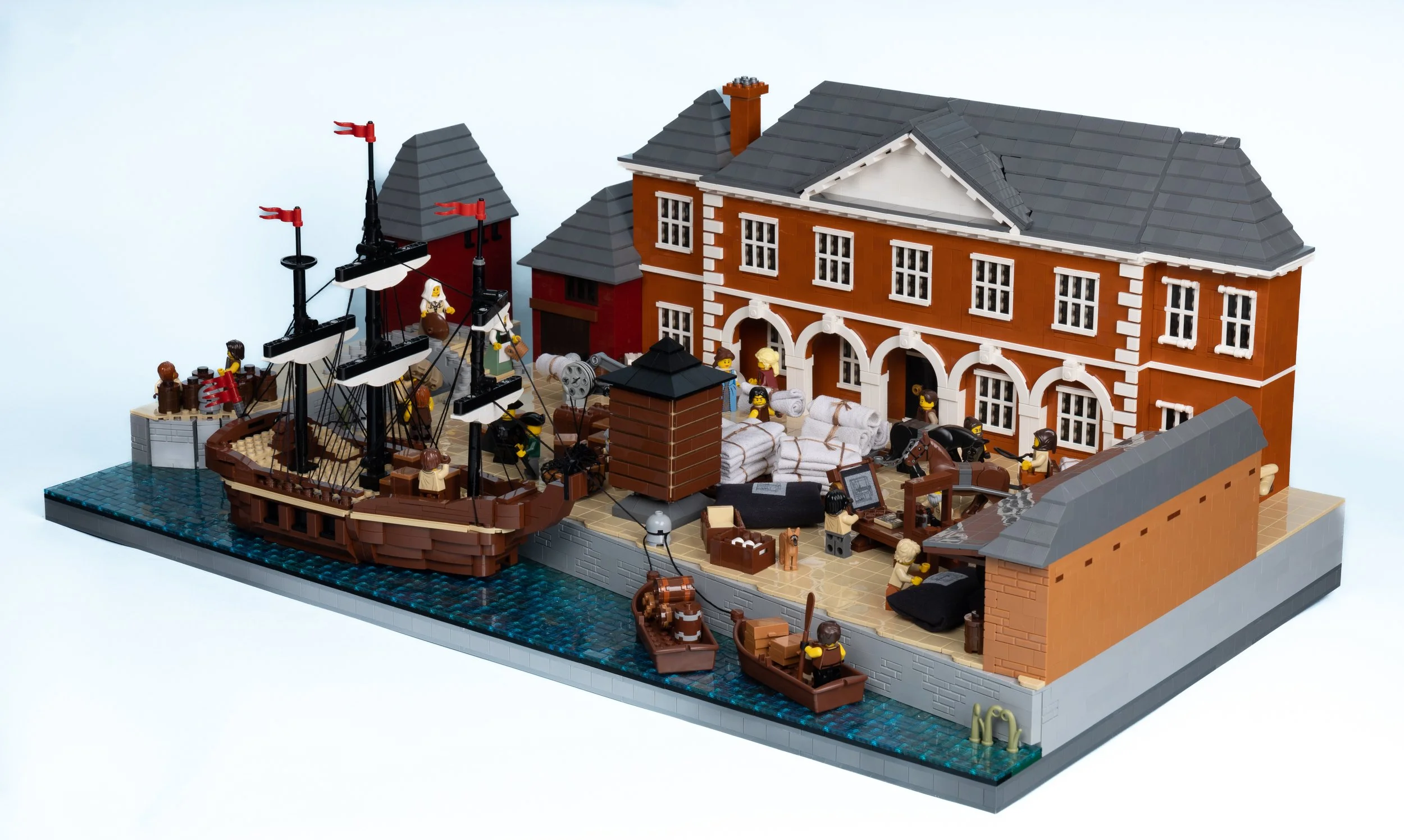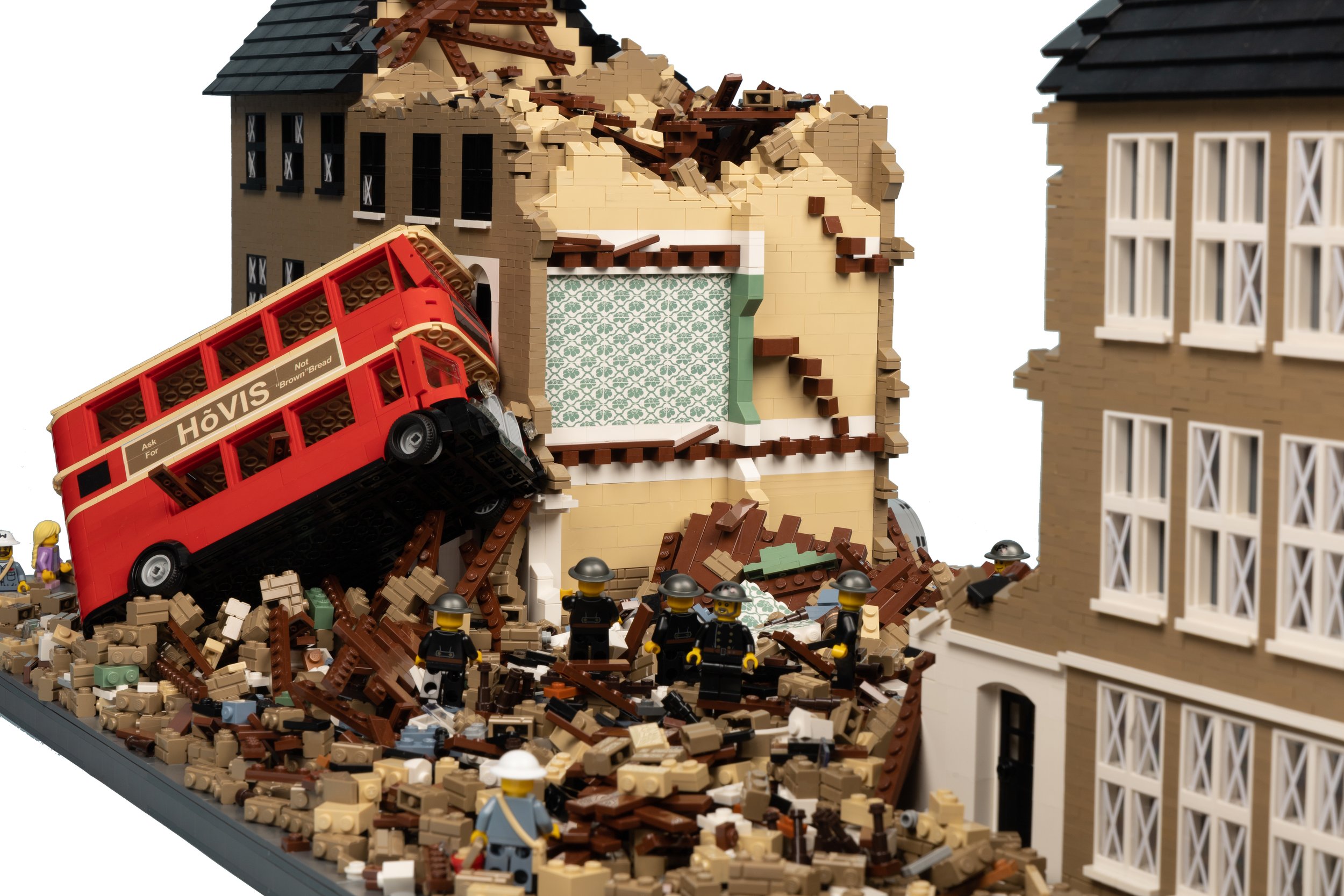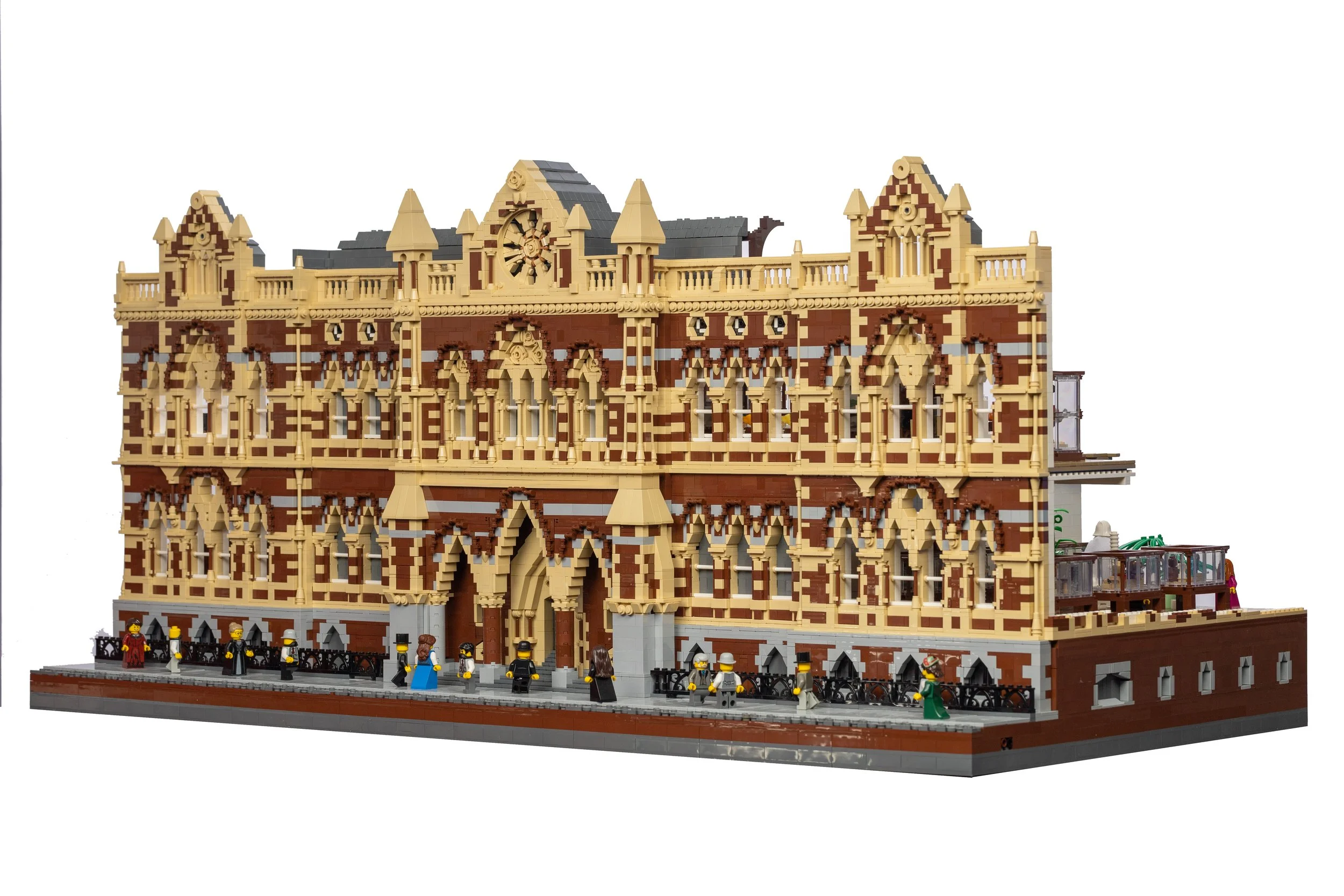Exeter through the ages
They say ‘better late than never’ and in this case, it’s been two years! This summer, ‘Brick by Brick’ opens in Exeter - an exhibition literally years in the making!
Back at the start of 2019, we started work on a series of special commissions for the Royal Albert Memorial Museum (better known as RAMM) in Exeter. The brief was to try and capture the history of Exeter throughout the ages in bricks. Starting with the Jurassic period, the exhibition traveled through time to the current - and then into the future with a glimpse of what Exeter might look like. These would turn out to be nine of the most fun commissions we’ve made in a while!
The south west coast of England is renown for its fossils - so it made sense to start our journey with some dinosaurs. Of course, we have an entire tour about Dinos, but this time we took a slightly different tack. We decided to match underwater creatures with micro-scales ones on land and a backdrop made of many ‘wedge’ plates. A perspex sea level completes the illusion!
Moving forward quite a long time, but still 2000 years ago - the Romans occupied much of Britain, bringing their bath houses with them. Just as the romans used lots of tiles - so did we! hundreds of black and white tiles went into the floor and roof. And a fair few in the hypocaust as well!
Coming into the Medieval period, Exeter castle was an ideal choice for a model. As the castle is known for its red walls - we could stay away from gray and use a brighter colour!
Tudor Exeter is known for the ‘House that moved’. Not that it moved in Tudor times, but one of the period buildings was physically moved back in the 1960s. 16 Edmund street had been around since the 1400s but was in the way of a new road. Thankfully the building was saved and it provided great inspiration for our Tudor building.
Fast forward to the 18th Century - the quayside of Exeter continues to be an important hub for local trade. The flourishing cloth industry needed to be able to export product around the world. Cloth doesn’t replicate too well in LEGO, but that gave us the opportunity to put our substrate printer to great use and add the logo to the bundles of cloth!
Wartime models aren’t something that we usually build. I certainly don’t have the obsession with the second world war that some American AFOLs do! That said, WWII had a huge impact on the whole of the UK and we didn’t want to leave this period out. I decided to re-create an image from war-torn London, showing a bus thrown up into houses by bombing. I personally think this is one of the nicest models that we’ve ever built. Oh, and it’s glued. ALL glued - all that rubble!
Bringing Exeter right up to date, the local leisure centre proved the perfect place to represent modern Exeter. Although it wasn’t yet built when we started - by the time the last models were delivered we could see the real building complete!
The exhibition doesn’t stop in the present day though, as Liveable Exeter wanted to see what a future Exeter might look like. We could use our imagination a little and take inspiration from current trends. Solar panels, wind generation and community buses all form part of the scene.
Finally, you might have noticed that I’ve only mentioned eight models. Well, the ninth was the RAMM building itself. Built as the name suggests in the Victorian period, it’s a fantastic gothic structure. Arches, columns and all sorts of things that make fantastic buildings but difficult ones todo in LEGO. Creating a cut-away view complicated matters even further but it was worth the wait.
We don’t have an exact piece count on this model, we’ll just say that it’s a lot! There were a few artistic liberties taken with the exhibits of course - but the stairwell (and that bright pink colour) are all accurate! It’s interesting to take a look at the museum today and see what has survived to today and which exhibits have moved where.
If you’d like to see more of these models, find the hidden museum artifact in each model or take a closer look - then these models (and a few more!) are on display in the RAMM building from now until the 11th September 2022. You can even have a go at creating part of the Exeter cityscape yourself at the museum. All the details on how to visit are here.
And remember, if you’d like to do something special for your museum, company or visitor attraction - please get in touch. We love a challenge!
and finally…
Usually, I’d post a short video of the build from a couple of camera angles. 3 or 4 minutes maybe, so it doesn’t take up too much of your time. Having worked on these models for 3 years though, I thought it might make a change to show you the whole build, including photography and even delivery! I did leave out the 10 hour drive for delivery though :-)
The video below was taken from one camera with a frame every 10 seconds. I have edited out all of the lunch breaks, coffee stops and meetings - but what you see below covers the entire build process from the base upwards. This isn’t the entire process though! You might notice that I have a digital model of the facade to help me, which was being refined by Alastair as I built. At the same time, Teresa was researching the interior and ordering parts to represent RAMM’s collection. A true team effort!











